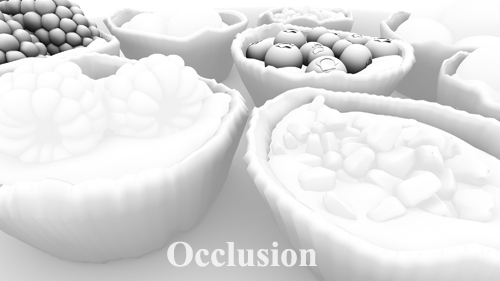“Making of Fruit Tarts ” by Hau Ming (Jamie) Li
Rendering
Final Gather is technology bounced light. It is cheating, but it looks great; however, you are stuck rendering straight out of Maya instead of layers and it makes render time very expensive even if you freeze the final gather points. Another downside is that when you render at 50% resolution in the render view, the quality of the image looks deliciously perfect, but does not at 100% resolution. That means it needs more Final Gather points. In the beginning, I was using 300 Final Gather points, and it was giving my tart crusts blotchiness because the material was a phong. I even turned on “jitter” in the Render Settings. I had troubleshot it to the point that I wanted to give up, then finally I decided to Google my issue and it turns out that someone else has the same blotchiness problem with Final Gather as I do. And he solved it by using an insane number of Final Gather points and a point interpolation of 12. I tried to render out 500,000 Final Gather point accuracy at 72 dpi at 2500 by 1406 resolution, but on the third day, it crashed. I wanted that 50% resolution look from the render view and I got way too greedy for Maya and my processor to handle. So I rendered the FG points in half of the original and it took 3 days to render just the FG points. And I am still not satisfied.
Here is my 23,958 KB Final Gather Points

Here are the render settings I used with a Final Gather Bounce of 2.

Occlusion
The only geometries that need to be dark or slightly darker are the tray, blueberries, black berries and crust. I used a total of 6 occlusion nodes with different values. If you use too much occlusion on the custard, it will look plastic.

Depth of Field
I have to confess, I got help on this part. The lab instructor at the time, noticed that my image was missing a Depth of Field or ZDepth and suggested that I render it out straight out of Maya. Before I knew it, it added an extra 15 minutes per frame. I didn’t think about optimizing my scene at the time, so it was actually rendering twice as long. Anyway, a colleague of mine, Daniel Schrepf, came to my damsel in distress as a returned favor. He suggested that I render the ZDepth separately using a surface shader, and project a ramp texture onto the scene and then composite the final and occlusion in Shake. The best part was that it rendered out really fast.








Latest Comments